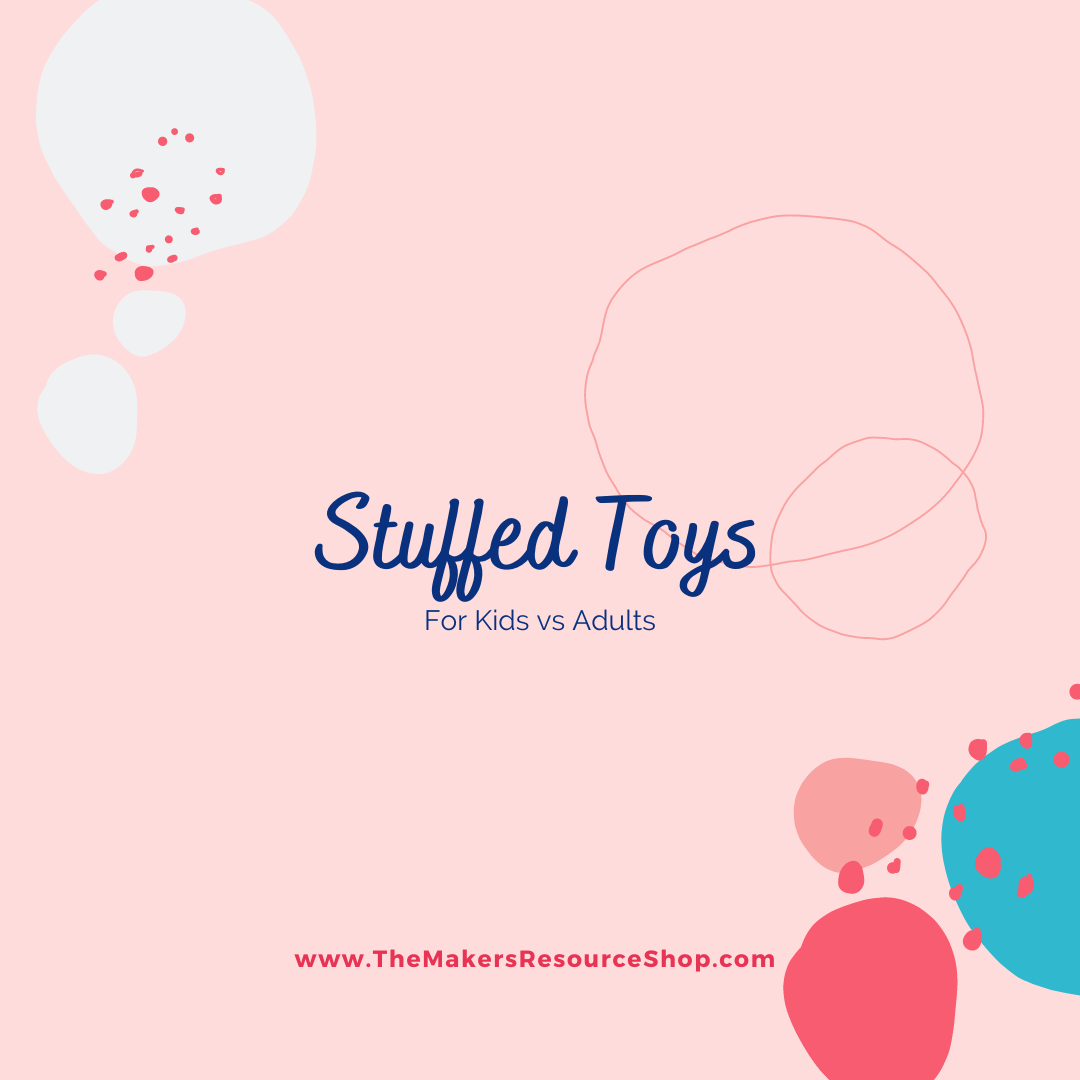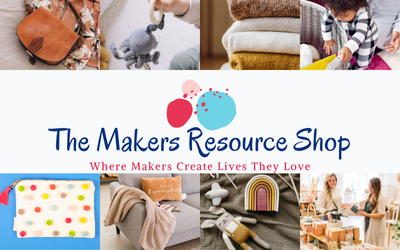
Stuffed Toys: For Kids vs Adults
To begin, I want to say that toys, in general, have a whole lot going on. Like a $98 publication going on. That shouldn't deter you from making and selling toys, though, because that publicaton covers a *lot* of different types of toys including teethers, wood blocks, peg people, ride-on toys, masks, stuffed toys, and many more. That means the whole publication will not apply, only parts.
A super quick rundown of US compliance for many toys will be:
- Register with the CPSC at SaferProducts.gov for an account and for a small batch manufacturer benefit (I'll talk about this in a bit).
- Figure out your age grading and make sure your marketing and advertising will promote that decision.
- Test, as applicable, for Total Lead Content, Lead in Surface Coatings/Paint, Phthalates, Heavy Elements, Small Parts, ASTM F963, Flammability* Federally, toys are not required to undergo flammability testing, but some states, PA, OH, an MA, may require it.)
- Label, permanently, with business name, location of making, date/batch, age grading (as applicable), filler information (as applicable), registration number (as applicable). If considered decor, you can include: NOT A TOY; FOR DECOR ONLY (this information should also be on your online listing.
- Create a Children's Product Certificate to show what regulations you are following and how you are complying with them. This document is what certifies your product as compliant.
.
What about kids toys vs adult/general use toys?
The Consumer Product Safety Commission's (CPSC) definition of 'child' is anyone 12 years old and under (as a side note, many states go up to age 14y for certain products). The term 'adult', here, can be used interchangably with 'general use', that is, the product isn't intended specifically for children to interact with.
.
There are a lot of really amazing makers out there with a fantastic talent for amigurumi creatures and the beauty of these creatures is a lot of them are for the adult nerd-at-heart and nerd-for-show!
In my personal research, I find that most amigurumi is intended for decoration more than play, so this perspective helps us jump start the decision on what the age grading should be. Here are a few factors to consider:
-
Pricing - Highly priced stuffed creatures are less likely to be given to young children and are more apt to be purchased as decor for adults.
-
Images - Make sure your images show older kids or adults that are clearly not near 3y or younger.
-
Appeal - Anything stuffed could appeal to a younger child, but, consider you create a character from a show...particularly a show not intended for children. It's unlikely to appeal to younger children. As well, stuffed creatures that are more realistic tend to appeal towards older children if at all.
-
Play Value - More delicate creations would likely have little to no play value as, if they are played with, they could easily break. The more basic a stuffed creature is, the more likely it is to appeal to younger children and have higher play value.
-
Materials - Things like safety eyes and doll joints should be for children over 3y due to the potential for small parts (although they are small, they aren't considered small when firmly attached to a larger item). Dragon wings and other such parts with wires are less likely to be good for younger children.
-
Be Honest - Just making up an age grade doesn't work. You need to sit down with yourself and your stuffed creature and ask who would be interested, how would it be utilized, what appeal does it actually have?
.
I've decided on my age grading, now what?
-
If your age grading is under 3y, you must have Small Parts testing at a CPSC-accepted lab, even as a Small Batch Manufacturer registered with the CPSC. Note: If your stuffed creature is 100% fabric/fluff filler (no pellets or rattles), you do not have to do this testing. You must follow ASTM F963-17 as well, and this can reasonably be done at home as a registered Small Batch Manufacturer.
-
If your age grading is 3y+, but under 6y, then you must have a Small Parts Warning Label *if* your stuffed creature has small parts (like safety eyes) *and* it has either failed lab testing for small parts or you believe it could become a small part with normal use or abuse. You must follow ASTM F963-17 as well, and this can reasonably be done at home as a registered Small Batch Manufacturer.
-
If your age grading is 6y+, no Small Parts testing or warning labels. You must follow ASTM F963-17 as well, and this can reasonably be done at home as a registered Small Batch Manufacturer.
- If your age grading is 12y+, no testing, label with branding, and have a merry day! (You may still be subject to stuffed toy laws for PA, OH, and MA, but as I am aware, decoration is not included.)
.
I've decided my stuffed creature is a toy for children, and I need to do...ASTM F963??
Great! Now you know the age grading and the type of testing needed, but, what exactly is ASTM F963 and why did I say you could reasonably do this at home? The CPSC allows certain benefits to relieve small batch makers from significant burdens (we thank the former Handmade Toy Alliance for fighting for this). They created two categories to show what is allowed to be done 'first party' and what must still be done by a third party CPSC-accepted lab. Group A and Group B.
.
Group A are the things that small batch makers must still do at a lab and the two things that we see the most are Lead in Surface Coatings/Paints and Small Parts.
In Group B, these are the things we can rely on a supplier to provide information for (Total Lead Content, Phthalates, Heavy Elements) or reasonably do on our own provided that we can match the methods described in the ASTM F963 publication (yes, you can use clamps from a hardware store and hand-held luggage or meat scales as tools!). For stuffed creatures, the more common sections will include visual checks and normal use & abuse tests:
-
Material Quality - Is it clean?
-
Small Objects - safety eyes, doll joints, etc.
-
Accessible Edges, Projections, Points, & Wires/Rods - will anything cut/scratch, poke, or jab/puncture the child?
-
Cords, Straps, & Elastics - none may be over 12" in total length.
-
Seam Strength - place a clamp on either side of the seam and pull hard.
-
Marbles, Balls, and Pompoms
Due to copyright restrictions, I cannot provide any further information that this. You may be able to read the ASTM F963 publication free in the Reading Room. You can also see some of the normal use and abuse tests done on YouTube (THIS one is by the CPSC).
.
Whew!
This become longer than I anticipated! I'm going to leave you with that for now. Follow along for more information and, if you'd like, you can pop into our free Facebook group US Product Safety Compliance to ask basic questions.
.
I also have a private membership where I can work with you more personally through each step on your time. So instead of trying to rush through it all at once, you have the time and space to ask questions as they pop up and get a full response tailored to your situation. (The full membership offers a 30% testing discount. The Pocket membership does not.)
.
Questions? You can message me on Facebook at m.me/TheMakersResourceShop or email at hello@TheMakersResourceShop.com to see what offer would be best for you.
